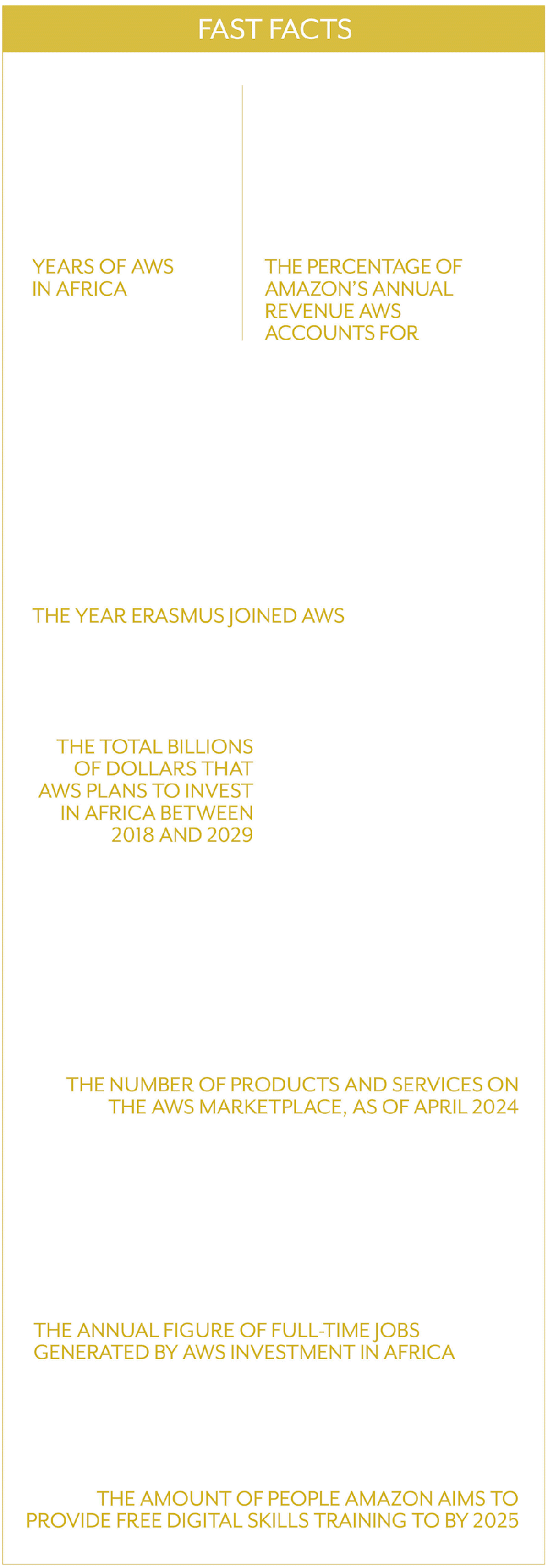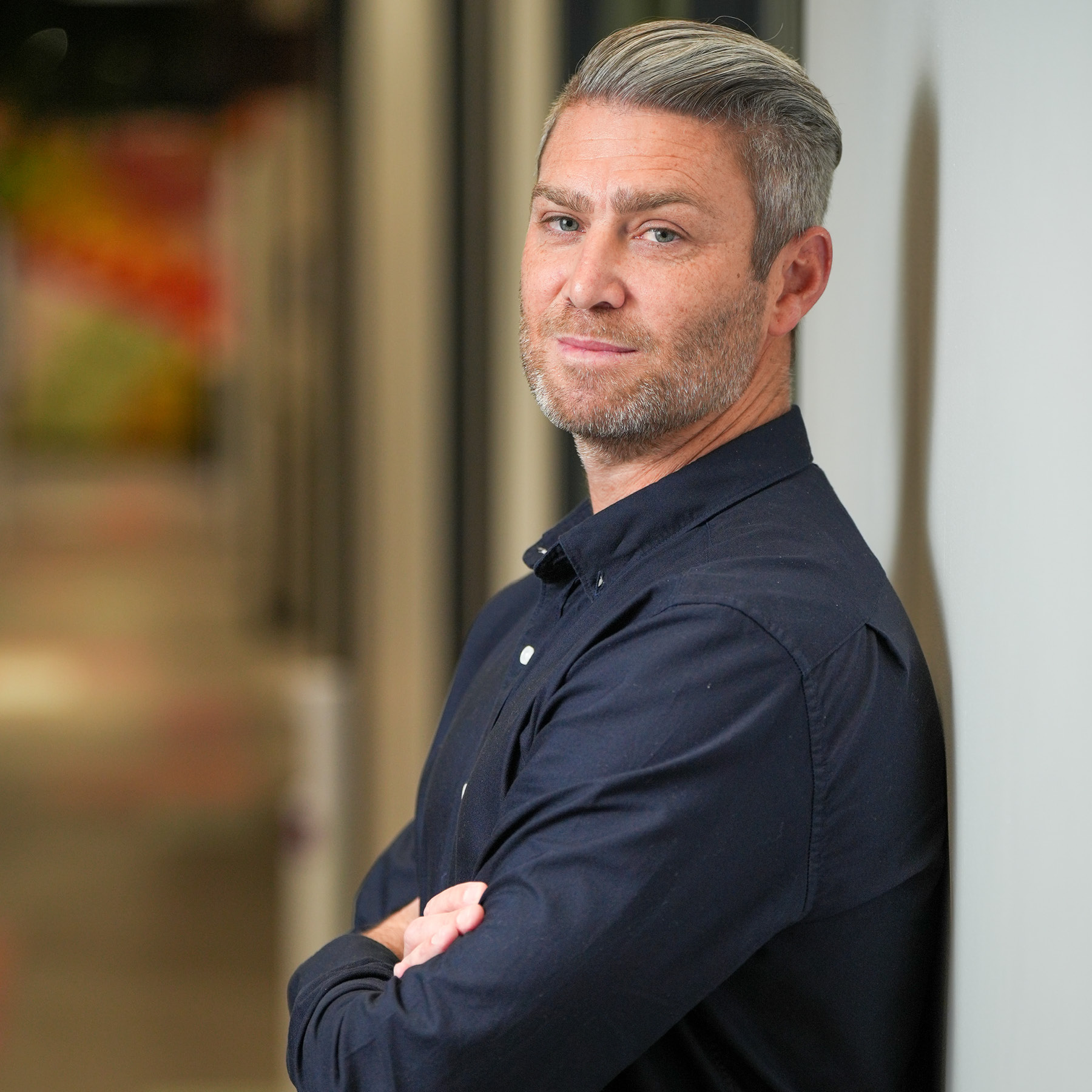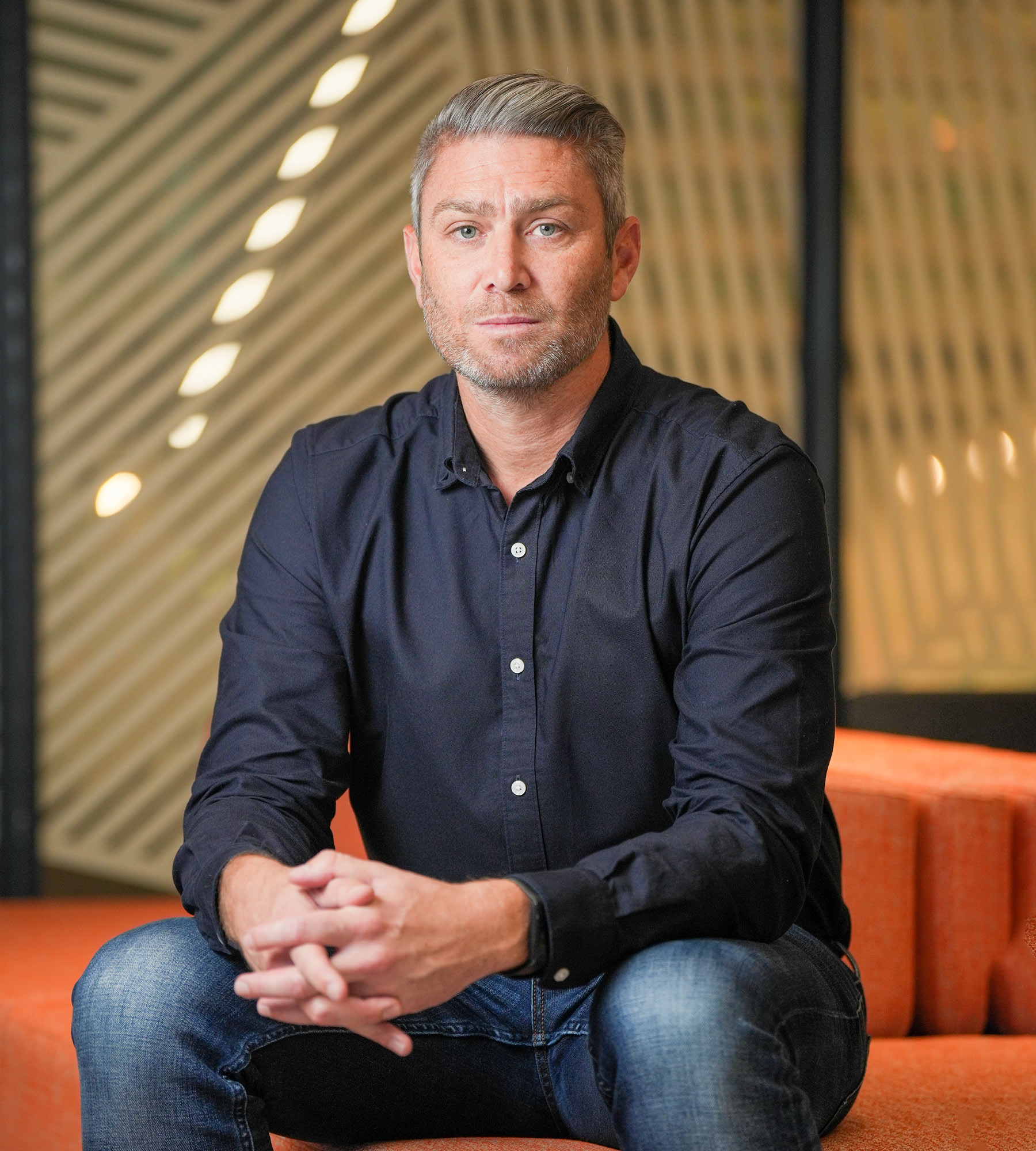Language
You can read the magazine in one of the following languages
When Amazon Elastic Compute Cloud (EC2) officially launched in 2006, there was little fanfare or hype surrounding the pioneering web service, which provides clients with secure and scalable capacity in the cloud.
Like the best ideas, the project started out as a response to an internal problem faced by executives at Amazon. The ecommerce giant was enjoying significant business growth, however, its existing infrastructure was unable to keep up with demands for scalability, reliability and cost-effectiveness.


EC2 took almost four years to innovate, but the wait was worth it. It also heralded the inception of Amazon Web Services (AWS), the subsidiary of parent company Amazon, which today accounts for 16.1 percent of its total revenue, and remains comfortably the largest player in the cloud-infrastructure-as-a-service market.
It’s a case study held up by many as the ultimate side project come good.
But for Chris Erasmus, AWS Country General Manager, South Africa, there’s one key detail that has almost been relegated to a footnote in the story.
“Essentially, the first cloud services were built and engineered in South Africa,” he tells The CEO Magazine.
The story starts two decades ago, in 2004. That’s the date when Amazon established a Development Center in Cape Town, where a group of developers were tasked with building next-generation networking and customer support technologies. For two years, they beavered away at the challenge. When complete, the team emerged having built the backbone for what would become EC2.
The Cape Town center marked Amazon’s first foray into Africa. But the continent would have to wait until 2015 for further investment: the year an office in Johannesburg was opened.
AWS’ pace of investment on the continent has since accelerated. In 2017, there was an expansion of AWS Direct Connect, a cloud service that bypasses the internet to allow customers to directly link their networks to AWS for consistent, low-latency performance into Africa.
In 2018, the content delivery network Amazon CloudFront in Johannesburg and Cape Town was launched. The latter release heralded its first cloud infrastructure in Africa.


It was around this time that Erasmus, then General Manager of the Data Center Business Unit at African-born technology provider Dimension Data, came onboard.
“I joined at a time when the AWS team was starting to lay the foundations for customer engagement in South Africa,” he recalls.
For Erasmus, who says he enjoys building things from scratch, the decision to join AWS was an easy one.
“It was an opportunity to essentially make history on the continent,” he says.
“We were just getting started in Africa. To be part of the early team, from that perspective, in engaging with customers, building up the strategy and understanding what investments would look like, for me, was just a great growth opportunity.”
He describes a journey of absolute change at an accelerated pace, topped in January 2022 by his appointment as Country General Manager, South Africa.
“We started with a small single digit number of individuals and that has grown to hundreds of employees,” he says. “With that, a handful of customers has grown into tens of thousands of customers across sub-Saharan Africa today.”
This growth is reflected in the bottom line, too. “When I started, our annual run rate was around US$17 billion,” he says. “We’re now tracking to be a US$100 billion run rate business globally.”
In his role as Country General Manager, South Africa, Erasmus oversees AWS’ local strategy. Unsurprisingly, much of his current focus is a word on everyone’s lips – AI.
“Amazon is improving not just our customers’ lives with practical, useful, generative AI innovations, but also our customers’ customers,” he says.
Examples include South Africa’s oldest and largest financial services provider, Old Mutual, which is using AI and machine learning services from AWS, combined with a cloud data lake, to give it a 360-degree view of its customers. This helps it to make personalized recommendations and speeds up the account and loan approvals processes. The bank is also harnessing AWS Amazon Lex as its website chatbot.
Other leading financial institutions on the continent that are harnessing AWS’ generative AI innovations include Standard Bank. It’s using cloud-based, machine-learning platform AmazonSagemaker to help customers make better financial decisions. Meanwhile, TymeBank, the digital financial services provider that launched in 2019, draws heavily on AI across a digital onboarding system, machine learning verification and an AI chatbot.
On a global scale, AWS is working with the likes of golf’s PGA Tour and Formula One to enhance the viewer and fan experience using generative AI. “A couple of years ago, we started to help Formula One think about how they organize their data and the impact that can have on fans,” he explains.
For instance, Battle Forecast uses track history and projected driver pace to predict how many laps before the chasing car is within ‘striking distance’ of the car in front. Alternative Strategy, a Formula One insight powered by AWS, is a new graphic that will provide fans and broadcasters with an alternative view of how drivers and their teams’ decisions impacted a race by analyzing how their races may have panned out, had they made different strategic decisions.
“Every decision counts and any single bit of information can contribute to the team making the right call in that key moment,” says Erasmus.
The biggest impact AWS has had on the sport, however, is around the design of the racing cars themselves.
“We’re seeing the smallest gaps between cars that we’ve ever seen in the history of qualifying,” he explains. “How much closer the cars are, that’s off the back of the insights and the data we have shared with Formula One to allow the sport to change the regulations and the design of the car.”
Erasmus explains how there are three key differentiators that distinguish Amazon’s approach to the development and deployment of AI: a strategic focus on practical, real-world applications of AI that enhance the customer and employee experience; the harnessing of AWS’ world-class data, computer and talent resources to push innovation in the AI space; and the commitment to the development of responsible, reliable and trustworthy AI.
Similarly, it is investing and innovating in three defined ‘layers’ of generative AI, each designed to appeal to different customers, from deep data scientists who have the expertise and desire to manipulate the base infrastructure themselves to ready-to-use applications with in-build generative AI.
“We talk about them as three macro layers and they are equally important. We are investing in all of them,” he explains, adding that all three layers are trained on customer’s data over public data. “There’s a lot of control in terms of the accuracy and security of the data, because it’s only looking at data that you make available to it, rather than trawling the internet.”
The bottom layer is the infrastructure used to train foundation models (FMs), and run these models in production.
“Individuals can build and train their own models,” he says.
The middle layer provides access to all the large language models and other FMs customers need, and to the tools customers need to build and scale generative AI applications with them.
“At the top layer we have applications built leveraging FMs, so that anyone can take advantage of generative AI quickly and without any specialized knowledge,” he says.


One such example of this top level is Amazon Q, AWS’ generative AI-powered assistant, that generates code, tests, debugs and has multistep planning and reasoning capabilities that can transform and implement new code generated from developer requests.
“Amazon Q also makes it easier for employees to get answers to questions across business data – such as company policies, product information, business results, code base, employees and many other topics – by connecting to enterprise data repositories to summarize the data logically, analyze trends and engage in dialogue about the data,” he explains.
At Amazon, a company that has been in the AI and machine-learning space for over two decades, Erasmus says what’s most compelling about today’s technology advancement in the space is that the power lies now with the consumer.
“If you go back as far as 1999 on the amazon.com website, there was always personalization,” he explains. “Based on your preferences and previous browser history, it would make suggestions.”
The difference was that then, the technology wasn’t put in the hands of the consumer.
“It was essentially the science behind something that you didn’t understand, or even know about. The difference in terms of being transformative is that today, it can just be put in the hands of anyone,” he explains.
Erasmus appreciates that it’s an exciting time to hold such a strategically important role within the company; beyond AI, there is also AWS’ ongoing role in championing investment and skill development on the African continent to keep him motivated.
“If you look at Amazon in Africa, we continue to invest in, and be really committed to, the continent,” he says. “We absolutely believe that Africa is a place of huge potential and promise, and we believe that we should be part of that story.”
Part of that investment includes the 2020 launch of the AWS Africa (Cape Town) Region with three Availability Zones – a region, as defined by the company, that is “a physical location comprising multiple, isolated and physically separate Availability Zones, which in turn form clusters of logically connected data center infrastructure” – and with backup power to maintain operations in cases of electrical failures and load shedding.


Then, in 2022, having outgrown its existing footprint in Cape Town, AWS moved into larger premises in Johannesburg. It’s a change that allows for the better support of South Africa’s growing cloud sector, as well as for AWS to better service thousands of clients, from startups to public sector agencies, as they look to innovate, reduce IT costs and migrate to the cloud.
Last August, in keeping with AWS’ goal of providing free digital skills training to 29 million people around the world by 2025, the AWS Skills Center Cape Town opened its doors. The first such skill center outside of the United States, and only the third in the world, the walk-in space is open to the public and offers free access to cloud learning, along with advice on career possibilities.
It’s an opening that is hugely important as Erasmus looks toward the future.
“A big thing for us as we move forward is to continue to create access to skills in order to drive skill development, access to jobs and to support the underemployed. Driving skills development is critical for the continent,” he says.
Since announcing the AWS Africa (Cape Town) Region, AWS invested US$849 million through 2022 to meet customer demand for cloud computing services. Investment in the AWS Africa Region between 2018 and 2022 has resulted in an estimated contribution to the South African economy of US$653 million in gross domestic product.
AWS plans to invest US$1.65 billion more into its South African cloud infrastructure by 2029. In total, it is estimated that AWS will invest US$2.5 billion in South Africa between 2018 and 2029, generating revenue across industries including construction, engineering, energy consulting, plumbing, maintenance and security, mostly through local South African businesses.
As Erasmus sees it, part of AWS’ mandate in South Africa is to be a good citizen of the country.
“It’s not only about driving our own success and our own ambition,” he explains. “We have a leadership principle that talks about success and scale as being important in terms of the way that we make a contribution to the broader ecosystem as well.”
In terms of cloud skills development, this translates to over 100,000 people in South Africa trained since 2017. Collaborations, such as its involvement with The Collective X, a non-profit organization that fosters partnerships to amplify the development of digital skills across South Africa, are its driving force.
“This allows us to train, upskill and provide access to education to a broader set of individuals than we otherwise would have been able to,” he says. Other partnerships – with tertiary institutions, the private sector or through finding creative ways to obtain investment with customers and partners – are also playing their part.

AWS’ investment has been estimated to support an annual average of more than 5,700 new full-time local vendor jobs in the South African data center supply chain, including telecommunications, non-residential construction, electricity generation, facilities maintenance and data center operations.
“For me, it’s about making sure that we are inputting into communities, driving change and making investments where it’s most necessary and most needed,” Erasmus explains.
“That’s why we’ve made so many of the investments that we’ve made over the last couple of years.”
Along with its strategic investments, there are the programs the company has initiated with a wider societal scope. One such example is the AWS Equity Equivalent Investment Program (AWS EEIP) founded in 2018; an 18–24 month enablement and acceleration program for South African small to medium enterprises (SMEs) to develop their AWS business and grow in the Amazon Partner Network (APN).
“The program isn’t just about funding; it is also to help these SMEs build operational strength, to give them business coaching, to help build the skills in order for them to make a meaningful impact on the economy and, by extension, work with our customers,” Erasmus explains.


A number of those have been successful over the past five years, including Melio AI, a machine-learning operations consultancy founded by Merelda Wu and Harry Lee in 2019, and part of the AWS EEIP class of 2022.
“As part of the program, it gained access to the AWS Partner Transformation Program, headcount funding, market development funding and AWS training and certification,” Erasmus says. “As a result, it has been able to accelerate its AWS APN journey, becoming an AWS Select Tier Services Partner within four months of joining the program.”
Erasmus says he’s been very fortunate to have had a number of coaches and mentors across his own career and he now makes it a priority to spend time with individuals who could potentially learn from him.
“I believe in being really connected to those around me,” he explains. “I track how I’m helping them to drive their own personal growth ambitions outside of the normal metrics and expectations of the actual business. It’s important to me that we hire individuals who have big growth potential, and then we harness that and we obviously make sure that we give them everything they need to grow and be successful.”
Erasmus is also one of over 115 South African business leaders to commit to building the country through CEO Pledge, an initiative driven by Adrian Gore, BUSA Vice President and Group CEO of financial services group Discovery.
“It’s a commitment for collaboration across a number of South African business leaders,” Erasmus explains of the cause.
“The idea beyond that is a concrete commitment to drive change in key sectors that are essential for our economic prosperity. We’re partnering with the private and public sectors to identify ways to bring assets together that drive large-scale skill development to a broader set of individuals across the country.
“We’ve realized that we can’t do it on our own, but by partnering with the likes of Standard Bank, ABSA, Cisco and Microsoft, we’re able to bring skills development at scale to the market. That’s something that, for us, is critically important.”
Partnerships are also critical for the adoption of AWS technology.
“Our customers might not have the skill or the expertise, so healthy and deep partnerships allow us to bring expertise to them in order to solve the hardest problems that they have or identify,” he says.


Because, he continues, one critical component of the AWS mindset is that it doesn’t simply think about itself as a technology organization.
“We try to help our customers solve their hardest problems to deliver the most value,” he says. “Having specialist partners and deep partnerships means we can go and create the future together.”
These partners number in their thousands, and all play different roles to drive specific niche initiatives and outcomes for its customers; from global consulting firms such as Deloitte and Accenture to local or regional players such as his former employer, Dimension Data. Other important partners are First Distribution, an ICT distributor for data center, enterprise and cloud solutions, and Silicon Overdrive, an IT services and software developer.
“There are also the independent software vendors like Snowflake and SAP who build on top of AWS,” he continues. “They are also critical because our customers are buyers of technology, not always builders, and they want to be able to adopt these solutions that are ready-made off the shelf for themselves, powered by AWS.”
Whether it’s migrating to the cloud responsibly, modernizing infrastructure and architecture or building something new in terms of a new solution for a customer, partners play a key role in driving the different pieces of the desired outcome.
To demonstrate this, Erasmus only has to point to one key example.
“I think about the fact that, globally, we didn’t know that Netflix would build what they built on top of AWS until they built it,” he says, referencing how the global streaming network uses AWS for nearly all its computing and storage needs, including databases, analytics, recommendation engines, video transcoding and more.
“That’s off the back of them working with really smart engineers in order to ideate and build on our technology.”
The world may be evolving at a rapid pace, but the one certainty is that AWS will be the ear listening to its customers’ needs and requirements.
“Around 90 percent of everything that we release in terms of services or features in our technology comes off the back of direct feedback from our customers,” Erasmus explains. “The rest is us innovating on behalf of them, in terms of where the market is going.
“From our perspective, it’s about solving the hardest and most important outcomes for them by driving innovation on their behalf.”
During the COVID-19 pandemic, Erasmus says AWS took a proactive stance to help customers drive cost savings and cost reduction for optimization across the board.
“If you look at our history, we’ve proactively reduced pricing over 120 times already, but we’ve taken a stance in the last 12 months to make sure that we’re partnering closely with customers to drive those cost savings as they came out of the pandemic and into this economic crunch we’re now experiencing,” he explains.
“Because during the pandemic, it was this race for survival as companies needed to transform the business in order to reach their customers. After that, it then became about, ‘How do we make sure this is responsible? How do we make sure that the costs are appropriate so that we can then drive long-term value?’
“We’ve had to spend a lot of time with our customers helping them to do that.”
